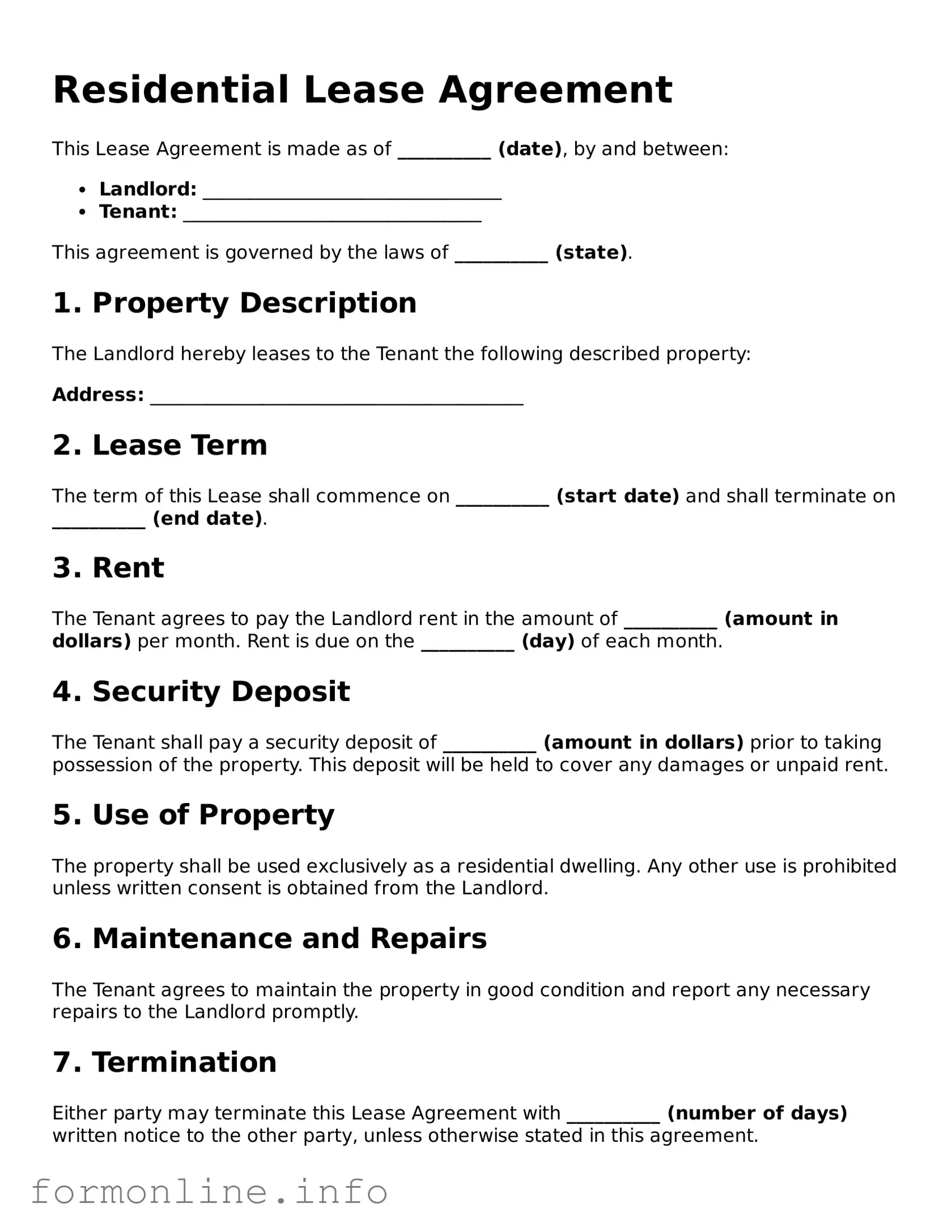A Rental Agreement is often considered synonymous with a Lease Agreement, yet it typically covers shorter durations. While a Lease Agreement may span a year or more, a Rental Agreement usually pertains to month-to-month arrangements. Both documents outline the terms of occupancy, including rent amount, security deposits, and maintenance responsibilities. They serve to protect the interests of both landlords and tenants by clearly defining expectations and obligations.
A Sublease Agreement allows a tenant to lease their rented space to another individual, known as a subtenant. This document shares similarities with a Lease Agreement in that it must specify the terms of the rental, including duration and payment details. However, the original tenant remains responsible to the landlord for the lease's obligations. Both agreements aim to establish clear boundaries and responsibilities among the involved parties.
A Commercial Lease Agreement is used for business properties rather than residential spaces. Similar to a Lease Agreement, it outlines the terms under which a business can occupy a property. Key elements include rent, duration, and maintenance responsibilities. However, commercial leases often include additional clauses specific to business operations, such as signage rights and permitted use, reflecting the unique needs of business tenants.
A Tenancy-at-Will Agreement allows either the landlord or tenant to terminate the agreement at any time, provided proper notice is given. This document is less formal than a Lease Agreement, which typically has a fixed term. Despite its flexibility, a Tenancy-at-Will still outlines essential terms like rent and property use, mirroring the foundational purpose of a Lease Agreement in establishing a clear relationship between the parties.
A Roommate Agreement is a document that outlines the terms of living arrangements between individuals sharing a rental property. While it is not a lease in itself, it often complements a Lease Agreement by detailing responsibilities such as rent division, utility payments, and house rules. This agreement helps prevent conflicts among roommates by clarifying expectations, similar to how a Lease Agreement serves to define tenant-landlord relationships.
A Purchase Agreement is used in real estate transactions, detailing the terms under which a buyer agrees to purchase property from a seller. While fundamentally different from a Lease Agreement, both documents share a common goal: to clearly outline the rights and responsibilities of the parties involved. Each agreement serves as a legal framework to ensure that all parties understand their obligations, whether for renting or buying property.
An Option to Lease Agreement grants a potential tenant the right to lease a property at a future date. This document resembles a Lease Agreement in that it outlines the terms under which the lease will occur, including rent and duration. The key difference lies in its function as a preliminary agreement, allowing the tenant to secure the right to rent before the actual lease is signed.
A Lease-Purchase Agreement combines elements of both leasing and purchasing a property. It allows a tenant to rent a property with the option to buy it later. This document shares characteristics with a Lease Agreement by detailing rental terms, while also incorporating purchase terms, such as the purchase price and timeline. It serves as a pathway for tenants who wish to eventually own the property they are renting.
Understanding the Employment Verification form is essential for both employers and candidates navigating the job market. This crucial document confirms a candidate's job history and qualifications, ensuring a smooth hiring process. For additional insights on how to effectively manage this form, visit Top Forms Online, which provides valuable resources for employers and job seekers alike.
A Maintenance Agreement outlines the responsibilities for property upkeep, often in conjunction with a Lease Agreement. While a Lease Agreement specifies the general terms of occupancy, a Maintenance Agreement focuses on the specifics of property maintenance, including who is responsible for repairs and upkeep. Both documents aim to ensure the property remains in good condition, protecting the interests of landlords and tenants alike.
A Service Agreement, particularly in the context of property management, details the services provided by a property manager to a landlord. While not a lease, it shares similarities in that it establishes the terms of service, responsibilities, and compensation. Both agreements serve to clarify expectations and obligations, ensuring that all parties understand their roles in the management of the property.
